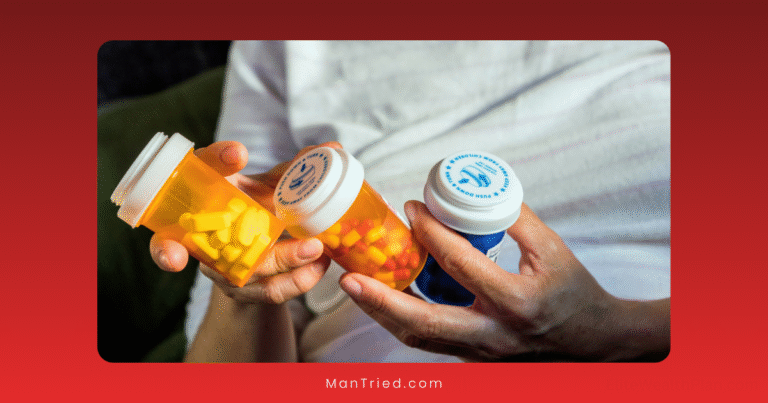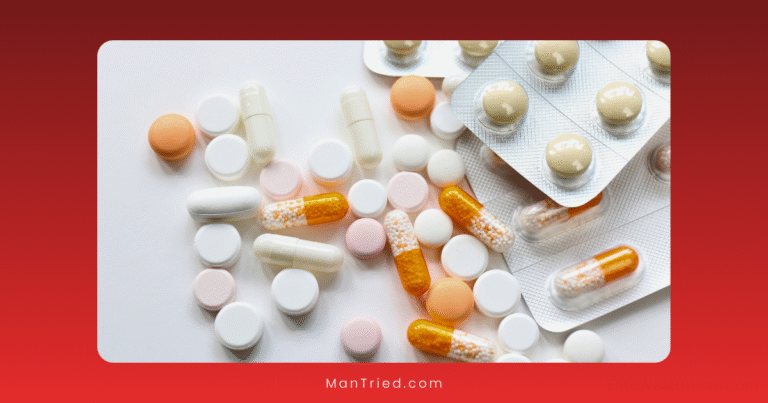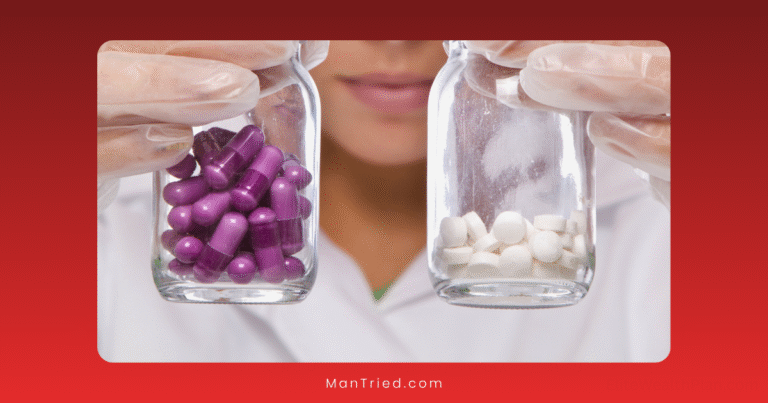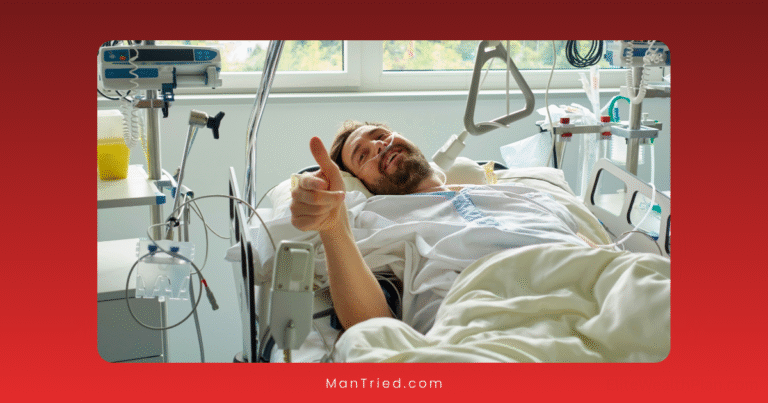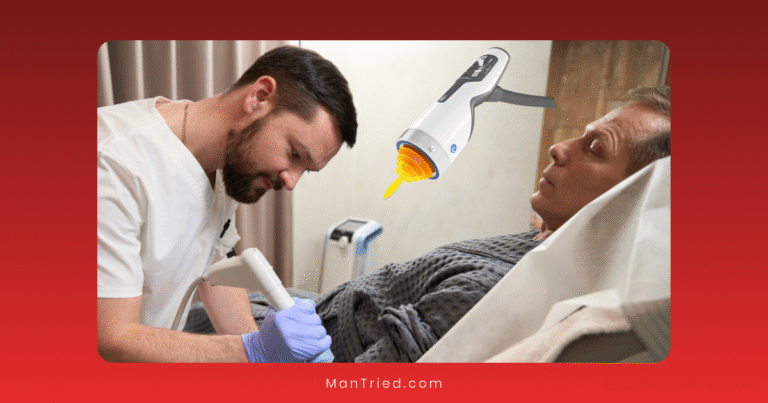LiSWT Explained: How Sound Waves Can Restore Erectile Function
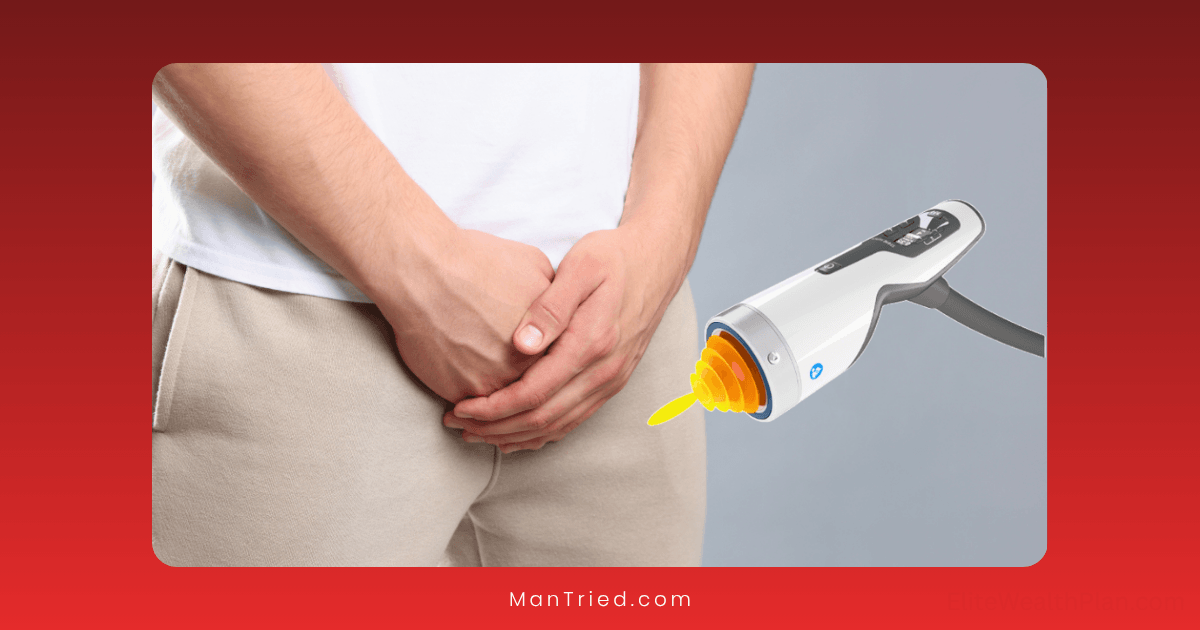
For the millions of men struggling with erectile dysfunction (ED), the landscape of treatment options has long been dominated by pills, injections, and implants. But an innovative approach using nothing more than precisely targeted sound waves is changing the conversation around ED treatment.
Low-intensity shockwave therapy (LiSWT) represents one of the most exciting developments in sexual medicine in decades. Unlike traditional treatments that temporarily enhance erections, LiSWT aims to actually restore natural erectile function by regenerating penile tissue.
But how exactly does this technology work? Is it effective? And is it right for you? Let’s dive into the science, evidence, and practical considerations of this groundbreaking treatment.
What Is LiSWT and How Does It Work?
At its core, LiSWT is remarkably straightforward: focused sound waves are directed at penile tissue to stimulate healing and regeneration. But the biological magic happening beneath the surface is far more complex.
The Technology Behind the Treatment
LiSWT uses acoustic pressure waves—essentially concentrated sound energy—delivered through a wand-like device placed against the skin of the penis. These waves are similar to those used in lithotripsy (kidney stone treatment) but at a much lower intensity.
According to the Cleveland Clinic, the procedure is generally painless, with many patients barely aware it’s happening during treatment. Each session typically lasts about 15 minutes and is performed in an outpatient setting without anesthesia.
The Biological Mechanism: More Than Just Increased Blood Flow
The real fascination lies in how these sound waves trigger healing at the cellular level. According to research published in PMC, LiSWT works through several complementary mechanisms:
1. Neovascularization (Formation of New Blood Vessels)
The controlled microtrauma from shockwaves stimulates:
- Release of vascular endothelial growth factor (VEGF)
- Increased nitric oxide production
- Recruitment of endothelial progenitor cells
- Formation of new capillary networks
This process, known as angiogenesis, improves blood flow to the penis—the fundamental requirement for healthy erections.
2. Nerve Regeneration
LiSWT has been shown to:
- Stimulate release of nerve growth factor
- Promote Schwann cell proliferation (cells that support nerve health)
- Enhance nerve conduction
- Improve nerve sensitivity
This neuroregeneration aspect is particularly important for men whose ED stems from nerve damage, such as after prostate surgery.
3. Tissue Remodeling and Rejuvenation
The therapy also:
- Activates stem cells within penile tissue
- Reduces inflammation
- Improves collagen organization
- Enhances tissue elasticity
Dr. James Anaissie, urologist and men’s health specialist, explains: “What makes shockwave therapy revolutionary is that it’s addressing the root causes of erectile dysfunction—vascular insufficiency, nerve damage, and tissue deterioration—rather than just temporarily compensating for these issues.”
The Evidence: Does LiSWT Actually Work?
With any emerging treatment, the crucial question is: What does the science say? The evidence for LiSWT has been building steadily since the first clinical study in 2010.
Clinical Trial Results
A comprehensive Cochrane review published in 2025 analyzed 21 randomized controlled trials with 1,357 participants and found:
- In the short term, LiSWT led to a mean improvement of 3.89 points in erectile function scores compared to sham treatment
- Long-term benefits were even more impressive, with a 5.25-point improvement
- Penile rigidity improved significantly in both short and long-term follow-up
- Adverse events were minimal, with no significant difference from sham treatment
A pivotal 2010 pilot study showed that all 20 men with vasculogenic ED experienced improved erectile function after six months of shockwave treatment, suggesting a potential success rate of up to 100% in carefully selected patients.
More realistically, larger studies indicate success rates around 60-75%, with the Cleveland Clinic reporting approximately 75% of patients expressing satisfaction with their results.
Who Benefits Most?
The research indicates that LiSWT is most effective for:
- Men with mild to moderate erectile dysfunction (IIEF scores between 12-21)
- ED with a primarily vascular cause
- Men who have had ED for less than 5-7 years
- Patients who still have some response to PDE5 inhibitors like Viagra
“Patient selection is crucial,” notes Dr. Rafael Carrion, Professor of Urology at the University of South Florida. “The best candidates are men with vascular insufficiency who haven’t progressed to severe ED. For these patients, shockwave therapy can be truly transformative.”
The Treatment Experience: What to Expect
If you’re considering LiSWT, understanding the typical treatment journey can help set appropriate expectations.
Treatment Protocol
While protocols vary somewhat between providers, the most common approach includes:
- Session frequency: Typically twice weekly
- Treatment duration: 6-12 sessions total, often divided into two 3-week periods with a 3-week break between
- Session length: Approximately 15 minutes
- Treatment areas: Multiple sites along the shaft and base of the penis
- Energy settings: Calibrated based on individual factors and equipment type
According to Healthline, the effects of treatment can last approximately one year, though some men report benefits for up to two years before requiring maintenance therapy.
The Procedure Itself
During a typical LiSWT session:
- A conductive gel is applied to the penis (similar to ultrasound gel)
- The treatment wand is placed against specific areas of the penis
- The machine delivers precisely calibrated acoustic pulses
- The wand is moved to different treatment zones
- The entire process is painless or minimally uncomfortable
No anesthesia, downtime, or recovery period is required. Most men return immediately to their normal activities.
When to Expect Results
Results from LiSWT are not immediate. According to the University of Utah, most patients begin seeing benefits within 1-3 months after completing treatment.
The improvement typically follows this pattern:
- Weeks 1-4: Minimal noticeable change
- Months 1-2: Gradual improvement in erectile function
- Months 3-6: Peak benefit period
- Beyond 6 months: Sustained results for most responders
Dr. Anne Peters, endocrinologist and sexual medicine specialist, advises: “I tell my patients to be patient. Unlike pills that work immediately, shockwave therapy is triggering biological processes that take time to develop. The wait is worth it for those who respond well.”
Important Considerations Before Pursuing Treatment
Despite the promising research, several important factors should inform your decision about LiSWT.
Regulatory Status and Availability
LiSWT is not currently FDA-approved specifically for erectile dysfunction treatment in the United States. The American Urological Association classifies it as an experimental treatment, and the Sexual Medicine Society of North America recommends it be performed under research protocols.
This “off-label” status means:
- Insurance typically doesn’t cover the treatment
- Quality and protocols may vary significantly between providers
- Marketing claims may sometimes exceed the evidence
Cost Considerations
The financial investment for LiSWT is substantial:
- Individual sessions typically cost $400-500
- A complete treatment course ranges from $3,000-6,000
- Most patients pay out-of-pocket
Dr. Tobias Köhler, urologist at Mayo Clinic, suggests: “Given the cost and experimental nature, I advise patients to thoroughly research providers, ask about their specific protocols and success rates, and ensure they’re working with board-certified urologists who specialize in sexual medicine.”
Potential Risks and Side Effects
While LiSWT is generally considered safe, potential side effects include:
- Minor pain or discomfort at the treatment site
- Skin redness or bruising
- Blood in urine (rare)
- Skin infections (rare)
- Painful erections (rare)
- Worsening of penile curvature in men with Peyronie’s disease (rare)
True LiSWT vs. Radial Wave Therapy: An Important Distinction
A critical warning: not all “shockwave” treatments are created equal. A 2022 review found that many clinics advertise “shockwave therapy” but actually provide radial wave therapy—a different technology that has not shown the same efficacy for ED.
True LiSWT uses focused waves that converge at a specific depth in the tissue, while radial waves disperse in a more superficial, less targeted manner. When researching providers, specifically ask if they use focused shockwave technology, not radial wave devices.
LiSWT Compared to Other ED Treatments
How does LiSWT stack up against other common approaches to erectile dysfunction?
LiSWT vs. PDE5 Inhibitors (Viagra, Cialis)
Advantages of LiSWT:
- Addresses underlying causes rather than symptoms
- Results last months to years rather than hours
- No timing required for sexual activity
- No drug interactions or systemic side effects
Disadvantages of LiSWT:
- Higher initial cost
- Delayed onset of action
- Not effective for all patients
- Requires multiple treatment sessions
LiSWT vs. Injection Therapy
Advantages of LiSWT:
- Non-invasive, painless procedure
- No risk of priapism (prolonged, painful erection)
- No need for self-injection before sexual activity
- Potential for lasting improvement
Disadvantages of LiSWT:
- May not be as immediately effective for severe ED
- Results less predictable
- Higher upfront cost
LiSWT vs. Penile Implants
Advantages of LiSWT:
- Non-surgical, no recovery time
- Preserves natural erectile function
- Reversible
- No mechanical components that can malfunction
Disadvantages of LiSWT:
- Less reliable for severe ED
- May not work for all patients
- May require periodic maintenance treatments
Combining LiSWT with Other Treatments
Many specialists are finding that LiSWT works best as part of a comprehensive approach to erectile dysfunction.
Synergistic Combinations
LiSWT + PDE5 Inhibitors Research suggests that men who don’t respond to PDE5 inhibitors alone may respond after LiSWT treatment. The improved vascular health from shockwave therapy can enhance the effectiveness of medications.
LiSWT + Platelet-Rich Plasma (PRP) Some clinics offer combination therapy with PRP injections (sometimes called the “P-Shot”) following shockwave treatment. The theory is that PRP provides growth factors that enhance the regenerative effects of shockwaves.
LiSWT + Lifestyle Modifications The most successful outcomes often come when LiSWT is combined with:
- Improved diet and exercise
- Smoking cessation
- Better blood pressure and diabetes control
- Stress reduction
- Pelvic floor exercises
Dr. Paul Thompson, sexual medicine specialist, emphasizes: “LiSWT isn’t a magic bullet—it’s most effective when part of a holistic approach to sexual health that addresses all contributing factors to erectile dysfunction.”
The Future of LiSWT: Emerging Developments
As research continues, several exciting developments are on the horizon:
Optimized Treatment Protocols
Current research is focusing on identifying the ideal:
- Number and frequency of sessions
- Energy settings and pulse counts
- Treatment areas and techniques
- Patient selection criteria
Home-Use Devices
Several companies are developing lower-intensity devices for home use, though these currently lack substantial evidence for efficacy and safety.
Combination Therapies
Researchers are investigating specific combination protocols that may enhance outcomes, particularly for men with more severe ED or multiple contributing factors.
Is LiSWT Right for You?
LiSWT represents a promising option for many men with erectile dysfunction, particularly those:
- With mild to moderate, vasculogenic ED
- Looking for a non-pharmaceutical, non-surgical approach
- Willing to invest in addressing the underlying causes
- Patient enough to wait for results to develop
However, it may not be ideal for men with:
- Severe ED of long duration
- Primarily psychogenic ED
- Significant hormonal deficiencies
- Budget constraints that make the out-of-pocket cost prohibitive
The Bottom Line: A Promising but Still Evolving Treatment
Low-intensity shockwave therapy offers a genuinely innovative approach to erectile dysfunction—one that aims to restore natural function rather than temporarily compensate for dysfunction. The scientific evidence continues to build, with most studies showing significant benefits for properly selected patients.
If you’re considering LiSWT, the most important steps are:
- Consult with a board-certified urologist specializing in sexual medicine
- Ensure the provider uses true focused shockwave technology, not radial waves
- Understand the experimental nature and out-of-pocket costs
- Maintain realistic expectations about timeline and results
- Consider LiSWT as part of a comprehensive approach to sexual health
With the right provider and appropriate expectations, LiSWT may offer new hope for restoring natural erectile function and the confidence and satisfaction that comes with it.

